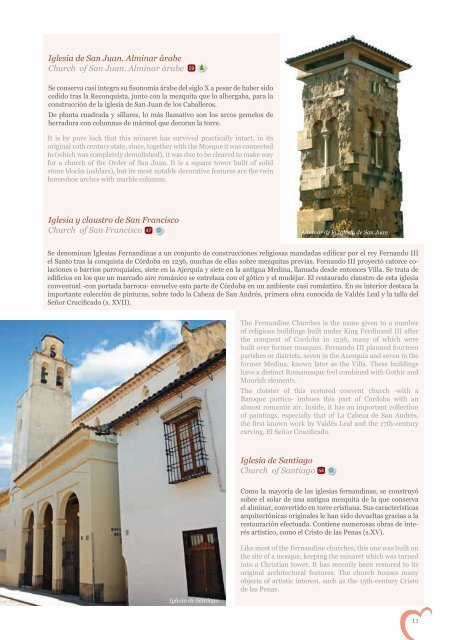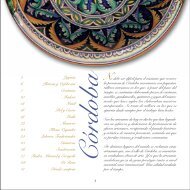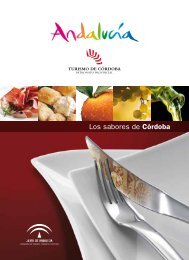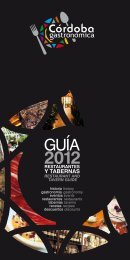Create successful ePaper yourself
Turn your PDF publications into a flip-book with our unique Google optimized e-Paper software.
Iglesia de San Juan. Alminar árabe<br />
Church of San Juan. Alminar árabe<br />
29<br />
Se conserva casi íntegra su fisonomía árabe del siglo X a pesar de haber sido<br />
cedido tras la Reconquista, junto con la mezquita que lo albergaba, para la<br />
construcción de la iglesia de San Juan de los Caballeros.<br />
De planta cuadrada y sillares, lo más llamativo son los arcos gemelos de<br />
herradura con columnas de mármol que decoran la torre.<br />
It is by pure luck that this minaret has survived practically intact, in its<br />
original 10th century state, since, together with the Mosque it was connected<br />
to (which was completely demolished), it was due to be cleared to make way<br />
for a church of the Order of San Juan. It is a square tower built of solid<br />
stone blocks (ashlars), but its most notable decorative features are the twin<br />
horseshoe arches with marble columns.<br />
Iglesia y claustro de San Francisco<br />
Church of San Francisco 47<br />
Alminar de la Iglesia de San Juan<br />
Se denominan Iglesias Fernandinas a un conjunto de construcciones religiosas mandadas edificar por el rey Fernando III<br />
el Santo tras la conquista de Córdoba en 1236, muchas de ellas sobre mezquitas previas. Fernando III proyectó catorce colaciones<br />
o barrios parroquiales, siete en la Ajerquía y siete en la antigua Medina, llamada desde entonces Villa. Se trata de<br />
edificios en los que un marcado aire románico se entrelaza con el gótico y el mudéjar. El restaurado claustro de esta iglesia<br />
conventual -con portada barroca- envuelve esta parte de Córdoba en un ambiente casi romántico. En su interior destaca la<br />
importante colección de pinturas, sobre todo la Cabeza de San Andrés, primera obra conocida de Valdés Leal y la talla del<br />
Señor Crucificado (s. XVII).<br />
The Fernandine Churches is the name given to a number<br />
of religious buildings built under King Ferdinand III after<br />
the conquest of Cordoba in 1236, many of which were<br />
built over former mosques. Fernando III planned fourteen<br />
parishes or districts, seven in the Axerquía and seven in the<br />
former Medina, known later as the Villa. These buildings<br />
have a distinct Romanesque feel combined with Gothic and<br />
Moorish elements.<br />
The cloister of this restored convent church -with a<br />
Baroque portico- imbues this part of Cordoba with an<br />
almost romantic air. Inside, it has an important collection<br />
of paintings, especially that of La Cabeza de San Andrés,<br />
the first known work by Valdés Leal and the 17th-century<br />
carving, El Señor Crucificado.<br />
Iglesia de Santiago<br />
Church of Santiago<br />
54<br />
Como la mayoría de las iglesias fernandinas, se construyó<br />
sobre el solar de una antigua mezquita de la que conserva<br />
el alminar, convertido en torre cristiana. Sus características<br />
arquitectónicas originales le han sido devueltas gracias a la<br />
restauración efectuada. Contiene numerosas obras de interés<br />
artístico, como el Cristo de las Penas (s.XV).<br />
Iglesia de Santiago<br />
Like most of the Fernandine churches, this one was built on<br />
the site of a mosque, keeping the minaret which was turned<br />
into a Christian tower. It has recently been restored to its<br />
original architectural features. The church houses many<br />
objects of artistic interest, such as the 15th-century Cristo<br />
de las Penas.<br />
13







